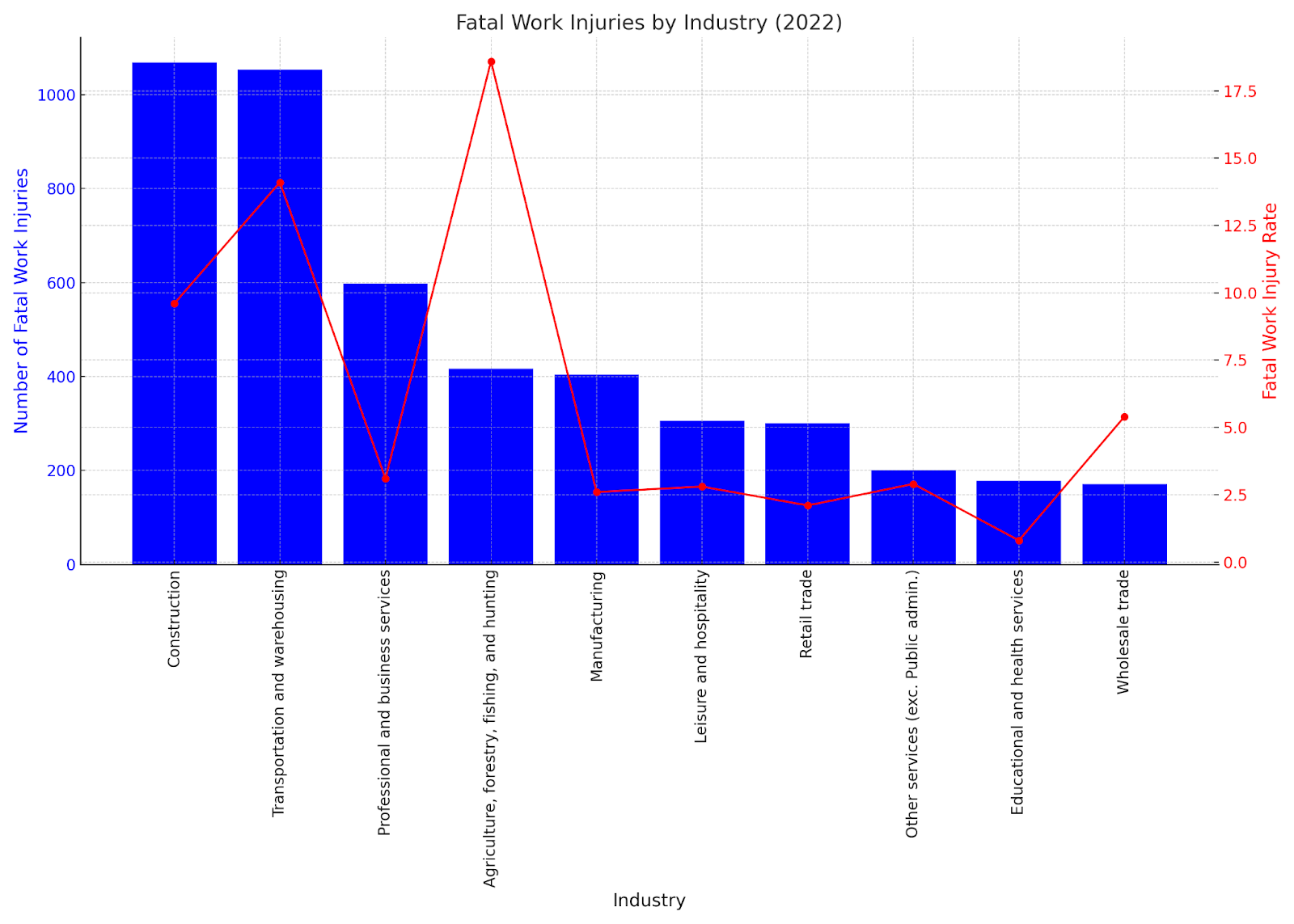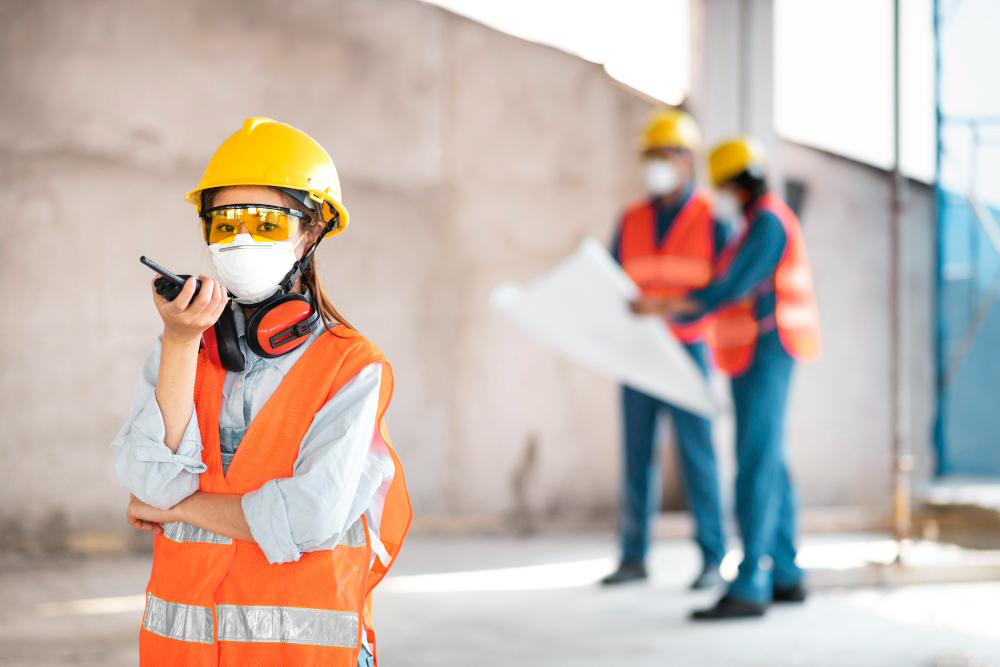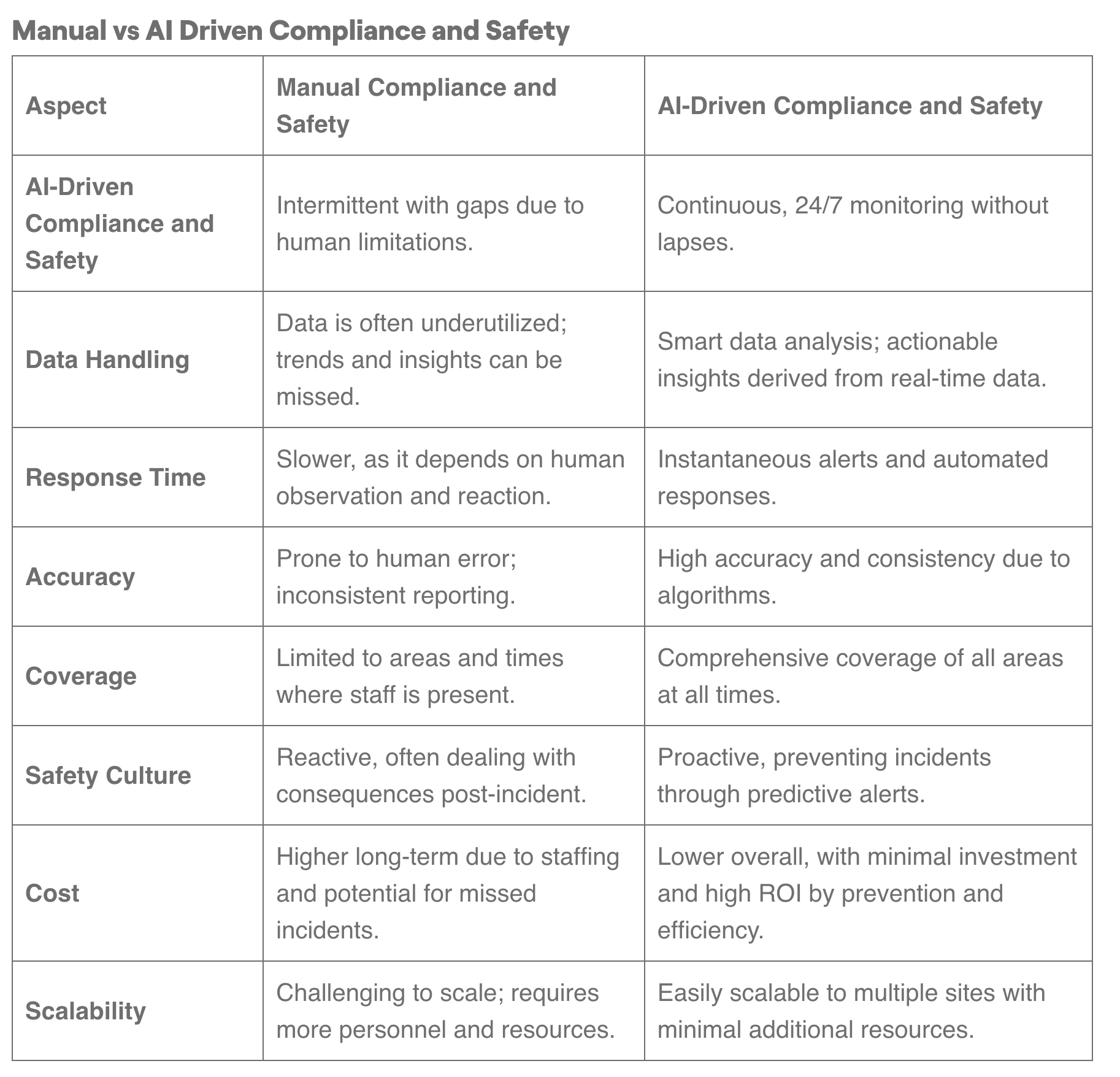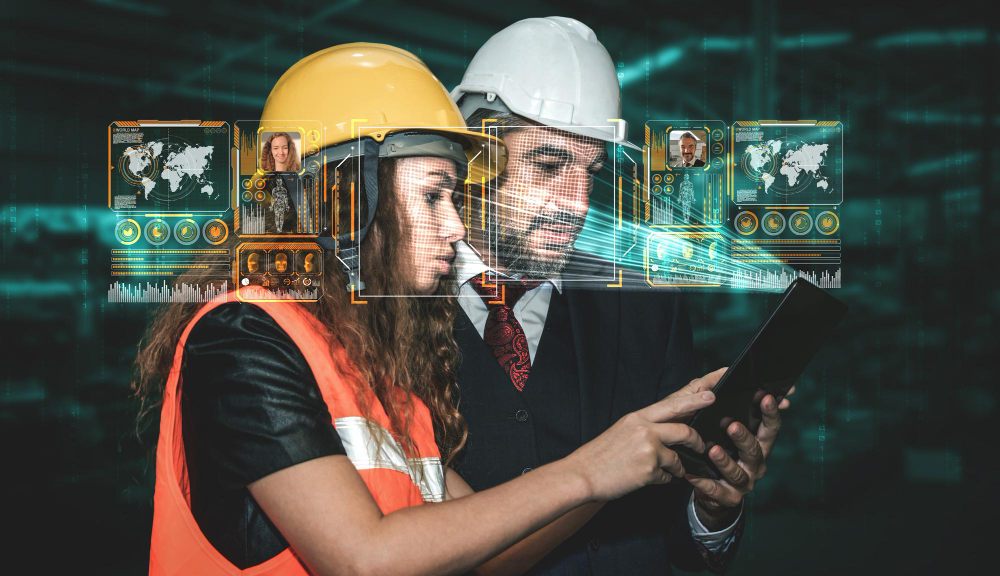Charting a New Course for Construction Safety: Leveraging AI to Transform Workplace Protocols

See It In Action

Vision AI PPE Detection in Action
See how Vision AI automatically detects PPE compliance in real-time
Example Videos
Vision AI PPE Detection in Action
See how Vision AI automatically detects PPE compliance in real-time
PPE Compliance in Construction Site
Example of PPE Violation detected by the system in Construction Site
Key Takeaways
- Alarming Statistics: Construction remains one of the most dangerous industries with 1,069 worker deaths in the US in 2022 alone
- Traditional Limitations: Manual safety monitoring is inconsistent and reactive rather than preventative
- Vision AI Solution: 24/7 automated monitoring provides real-time alerts for safety violations
- Comprehensive Coverage: From PPE detection to restricted zone monitoring, AI addresses the leading causes of construction fatalities
- Proven Results: Construction companies implementing Vision AI report 20-30% reduction in workplace incidents
The Construction Safety Crisis
The construction industry continues to face a significant safety challenge. Despite advances in equipment and protocols, construction sites remain among the most dangerous workplaces. According to the U.S. Bureau of Labor Statistics, 1,069 construction workers died on the job in 2022, making construction the industry with the third-highest fatality rate and the highest total number of deaths.
The leading causes of these fatalities paint a clear picture of the risks workers face daily:
- Falls, slips, and trips: 410 deaths
- Transportation incidents: 243 deaths
- Exposure to harmful substances or environments: 194 deaths
- Contact with objects or equipment: 149 deaths
Perhaps most concerning is that the construction industry's fatality rate increased from 9.4 in 2021 to 9.6 in 2022, indicating that traditional safety approaches are failing to address the evolving challenges of modern construction environments.
 Construction sites present numerous safety challenges that traditional monitoring methods struggle to address
Construction sites present numerous safety challenges that traditional monitoring methods struggle to address
The Limitations of Traditional Safety Approaches
Despite significant investments in safety training and equipment, construction sites continue to struggle with several fundamental limitations in their safety protocols:
Reactive Rather Than Proactive
Most construction safety programs operate reactively—addressing hazards only after incidents occur. This after-the-fact approach fails to prevent the initial injuries or fatalities that trigger the response.
Reliance on Manual Surveillance
Human safety officers cannot be everywhere at once. Even the most diligent safety teams can only monitor a fraction of a construction site at any given time, leaving significant blind spots where violations can occur undetected.
Inconsistent PPE Compliance
Personal Protective Equipment (PPE) can reduce the risk of serious injury by more than 37%, according to OSHA. Yet compliance remains inconsistent. Studies show that when workers are asked about non-compliance, a common response is simply, "I didn't feel like wearing it."
 PPE detection in construction site is Critical
PPE detection in construction site is Critical
Ineffective Data Utilization
Most construction sites fail to collect and analyze safety data effectively, missing opportunities to identify patterns and predict potential hazards before they cause harm.
These limitations highlight the need for a fundamental shift in how construction safety is approached—moving from reactive measures to proactive, technology-driven solutions.
Vision AI: Transforming Construction Safety
Vision AI represents a revolutionary approach to construction safety, using artificial intelligence to analyze visual data from cameras positioned throughout a construction site. This technology provides continuous monitoring that human safety officers simply cannot match.
How Vision AI Works
At its core, Vision AI uses advanced algorithms to analyze video feeds in real-time, identifying safety violations, hazardous conditions, and risky behaviors as they occur. The system can:
- Detect workers not wearing proper PPE
- Identify unauthorized personnel in restricted areas
- Recognize slip and fall incidents immediately
- Monitor for proper worker counts in hazardous zones
- Alert when workers enter dangerous "line of fire" situations
When violations are detected, the system immediately alerts safety managers, allowing for prompt intervention before accidents occur.
Key Vision AI Applications for Construction Safety
PPE Detection
One of the most impactful applications of Vision AI in construction is automated PPE detection. The system continuously monitors for proper use of hard hats, safety vests, gloves, and other required equipment, providing:
- Real-time alerts when workers are missing required PPE
- Documentation of compliance rates across different site areas
- Trend analysis to identify recurring compliance issues
- Verification that visitors and contractors follow the same safety standards
Construction companies implementing Vision AI for PPE monitoring typically report compliance improvements of 30-50% within the first three months of deployment.
Restricted Zone Monitoring
Many construction fatalities occur when workers enter hazardous areas without proper authorization or awareness. Vision AI systems can establish virtual perimeters around dangerous equipment, excavations, or areas with overhead work, immediately alerting when unauthorized personnel enter these zones.
Slip and Fall Detection
Falls remain the leading cause of construction fatalities. Vision AI can detect slip and fall incidents as they happen, enabling rapid response that can mean the difference between a minor injury and a fatal accident. The system can also identify conditions that might lead to falls, such as uneven surfaces or obstacles in walkways.
Worker Count Management
Certain construction activities require minimum worker counts for safety, while others become dangerous when too many workers are present. Vision AI can monitor these situations, ensuring:
- Minimum worker requirements are maintained for high-risk tasks
- Areas don't become overcrowded, creating additional hazards
- Buddy systems are properly implemented in dangerous zones
Line of Fire Detection
Many construction injuries occur when workers position themselves in the "line of fire"—areas where they could be struck by moving equipment or materials. Vision AI can identify these dangerous positions and alert both the at-risk worker and equipment operators before an accident occurs.
Manual vs. AI-Driven Safety: A Comparison
The contrast between traditional manual safety monitoring and AI-driven approaches reveals why Vision AI represents such a significant advancement:
 Clear difference between manual and AI-driven compliance and safety
Clear difference between manual and AI-driven compliance and safety
Implementation and Integration
One of the most compelling aspects of Vision AI technology is its ease of implementation and integration with existing construction operations:
Flexible Deployment Options
Vision AI systems can be deployed using:
- Existing CCTV infrastructure with software upgrades
- Dedicated safety cameras in high-risk areas
- Mobile camera units that can be repositioned as construction progresses
- Temporary installations for specific high-risk phases of construction
Cloud-Based Processing
Most Vision AI solutions utilize cloud computing for data processing, minimizing the need for extensive on-site hardware. This approach enables:
- Rapid deployment with minimal IT infrastructure
- Easy scaling across multiple construction sites
- Remote monitoring capabilities for safety managers
- Automatic software updates and system improvements
Data-Driven Insights
Beyond immediate safety alerts, Vision AI systems generate valuable data that can drive continuous improvement:
- Identification of high-risk areas or activities
- Documentation of safety trends over time
- Benchmarking across different projects or sites
- Evidence-based refinement of safety protocols
 Data Driven Insights from Safety AI
Data Driven Insights from Safety AI
Return on Investment
The financial case for Vision AI in construction safety is compelling when considering both direct and indirect costs of workplace accidents:
Direct Cost Savings
- Reduced workers' compensation claims
- Lower insurance premiums
- Decreased regulatory fines and penalties
- Minimized project delays due to accidents
Indirect Benefits
- Improved worker morale and retention
- Enhanced company reputation and competitive advantage
- Stronger safety culture across the organization
- Better documentation for safety compliance
Construction companies implementing comprehensive Vision AI safety systems typically see ROI ratios of 3:1 to 5:1 within three years of deployment.
The Future of Construction Safety
As Vision AI technology continues to evolve, its applications for construction safety will expand. Future developments are likely to include:
- Integration with wearable safety devices for personalized worker protection
- Predictive analytics that forecast potential hazards based on changing site conditions
- Automated safety reporting for regulatory compliance
- Virtual reality training informed by actual site safety data
These advancements will further transform construction safety from a reactive necessity to a proactive, data-driven discipline that prevents accidents before they occur.
Conclusion
The construction industry stands at a crossroads. Despite decades of safety improvements, workers continue to face unacceptable risks, as evidenced by the rising fatality rates. Vision AI technology offers a path forward—a way to fundamentally transform how safety is managed on construction sites.
By providing continuous monitoring, instant alerts, and data-driven insights, Vision AI addresses the core limitations of traditional safety approaches. The technology creates a proactive safety ecosystem that can identify and mitigate risks before they result in injuries or fatalities.
For construction companies committed to protecting their workers while improving operational efficiency, Vision AI represents not just an innovative technology but a moral imperative. The question is no longer whether to implement these systems, but how quickly they can be deployed to start saving lives.
Ready to transform safety on your construction sites? Contact Visionify today to learn how our Vision AI solutions can protect your workers and improve your safety outcomes.
Frequently Asked Questions
Find answers to common questions about this topic
Want to learn more?
Discover how our Vision AI safety solutions can transform your workplace safety.
Schedule a DemoSchedule a Meeting
Book a personalized demo with our product specialists to see how our AI safety solutions can work for your business.
Choose a convenient time
Select from available slots in your timezone
30-minute consultation
Brief but comprehensive overview of our solutions
Meet our product experts
Get answers to your specific questions
Related Articles
Subscribe to our newsletter
Get the latest safety insights and updates delivered to your inbox.


